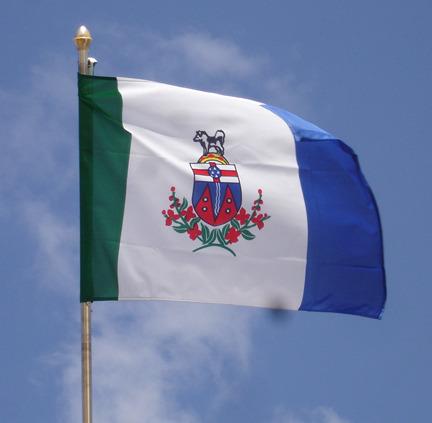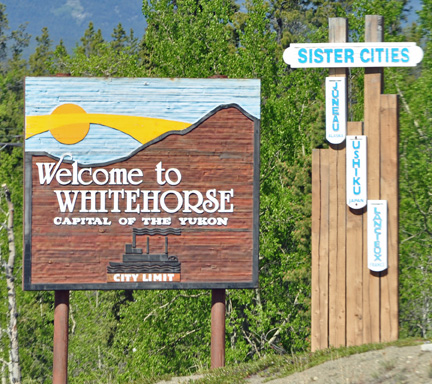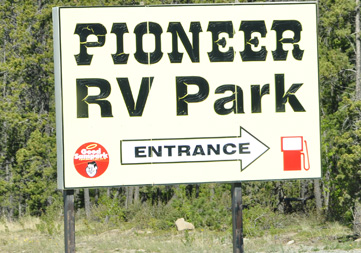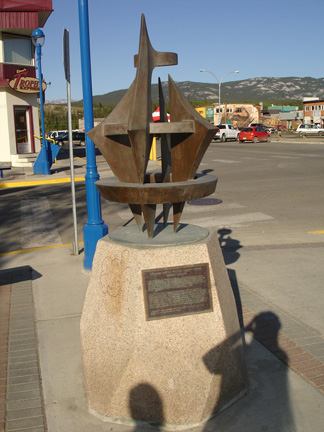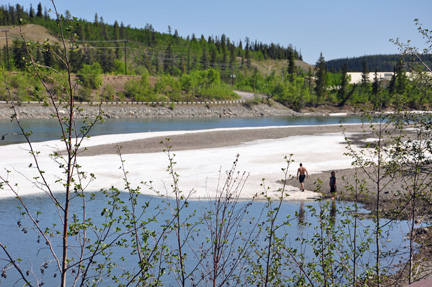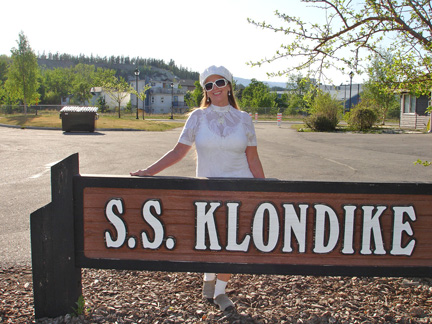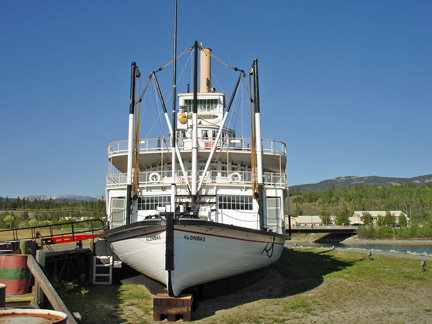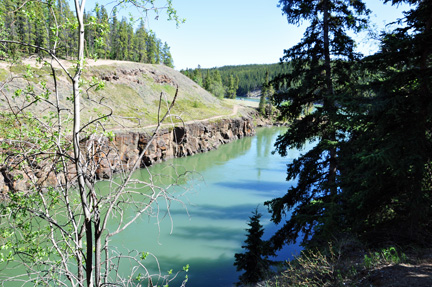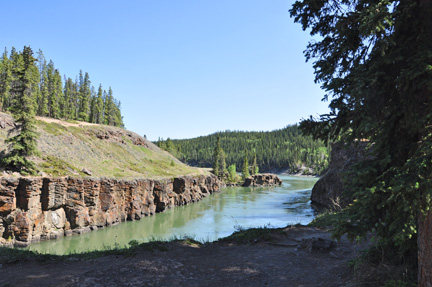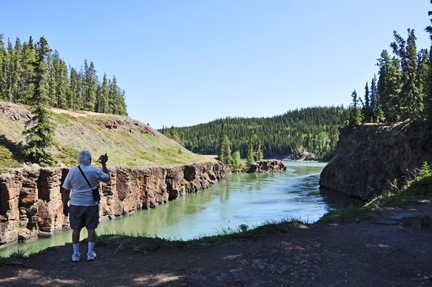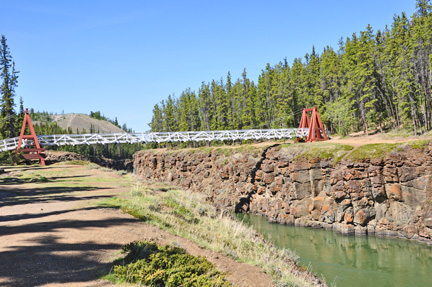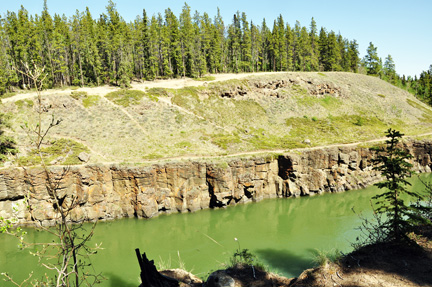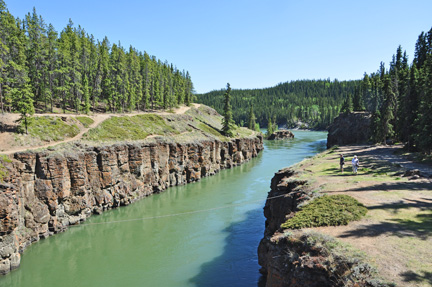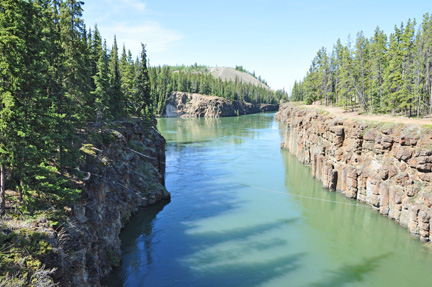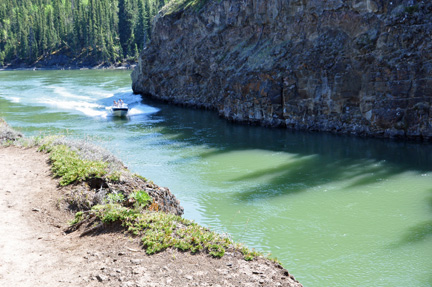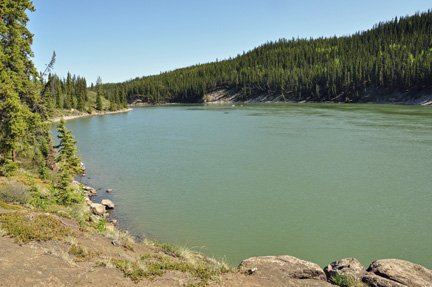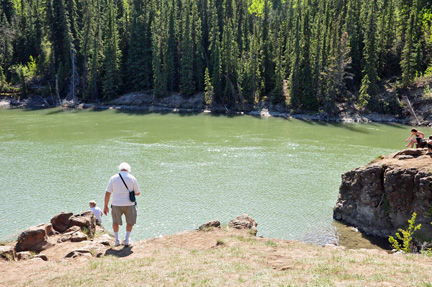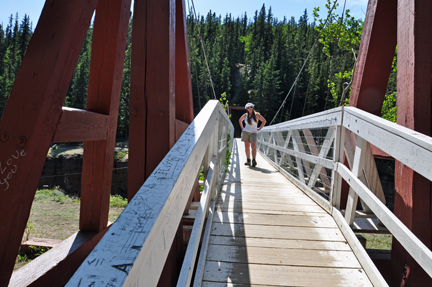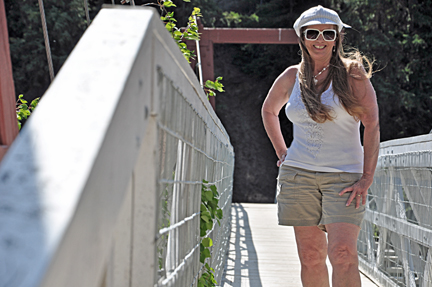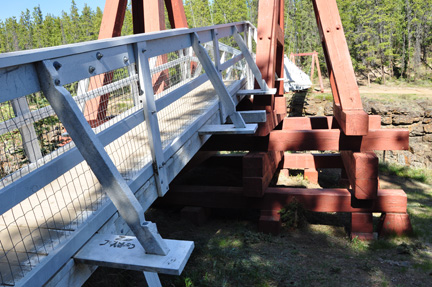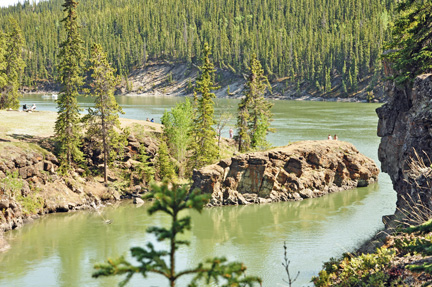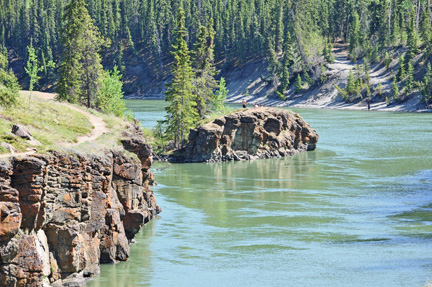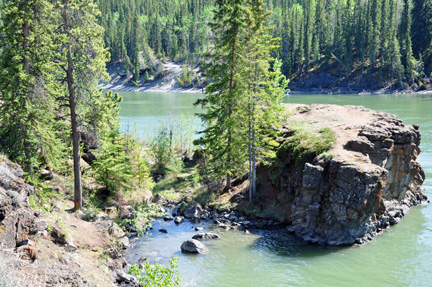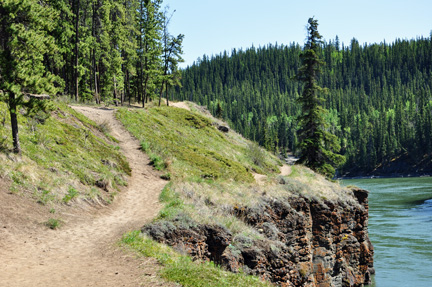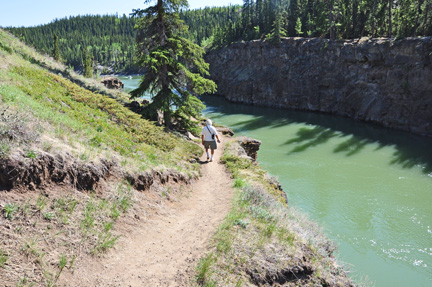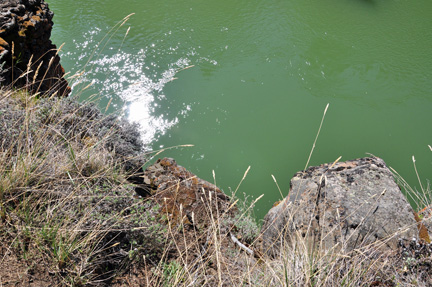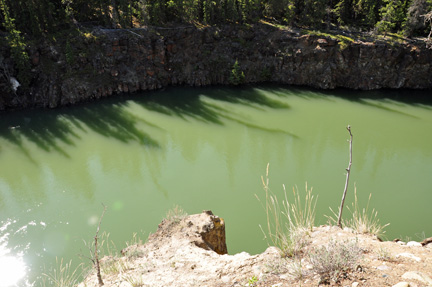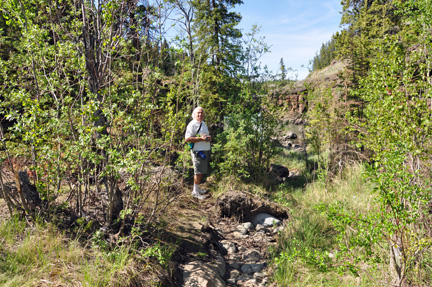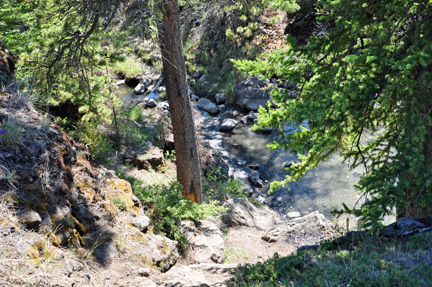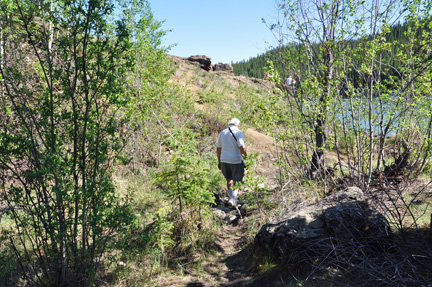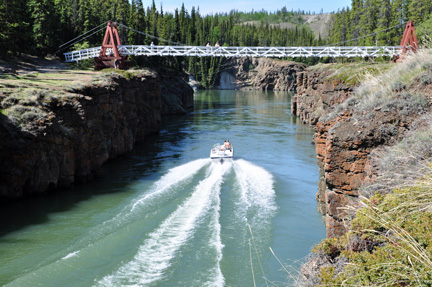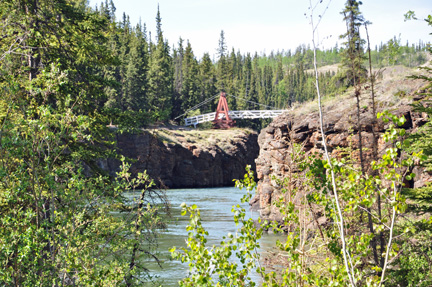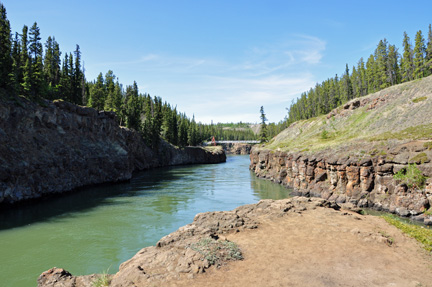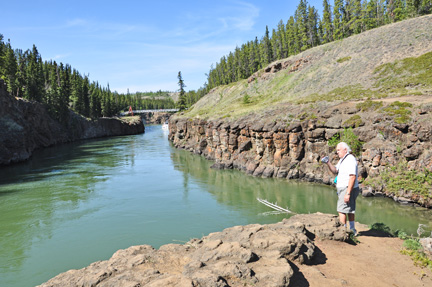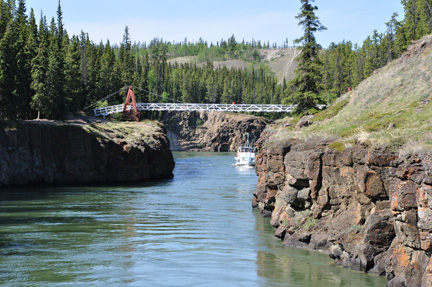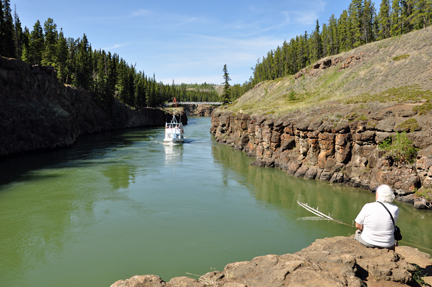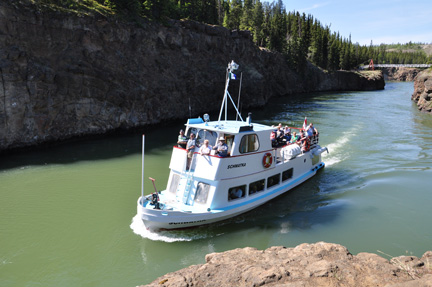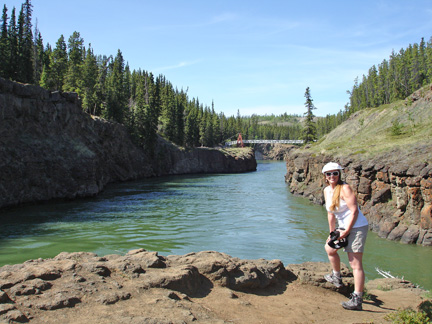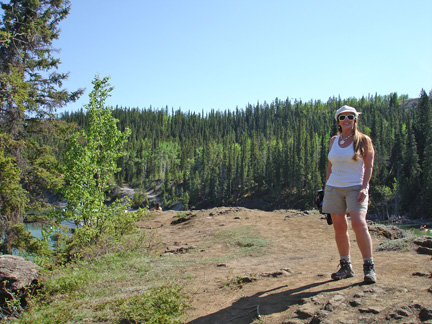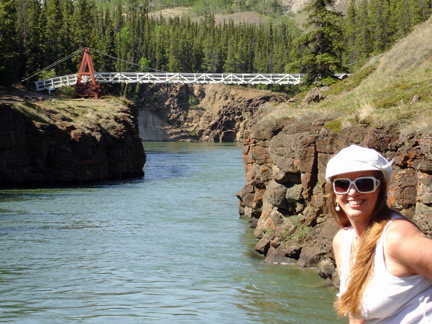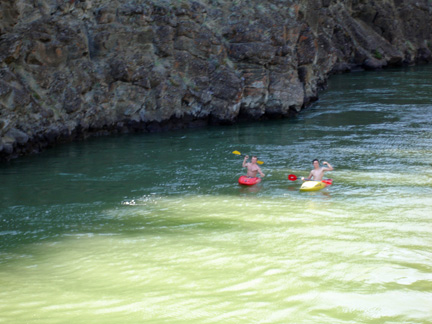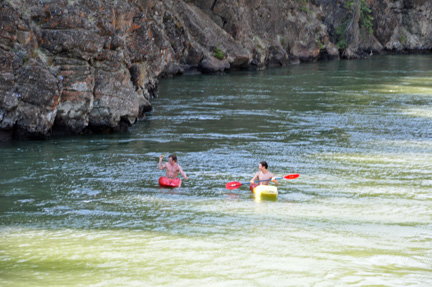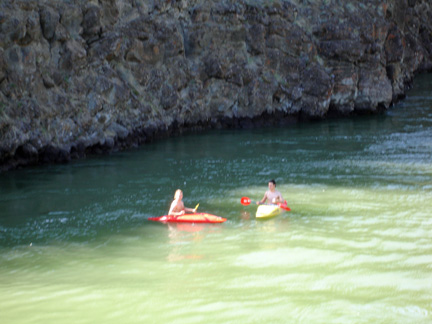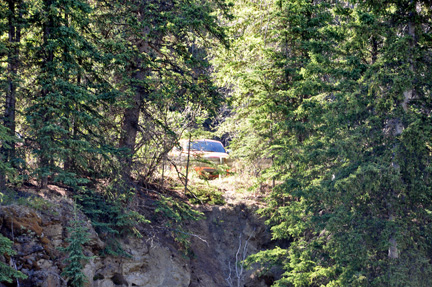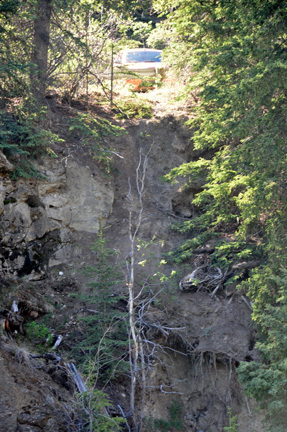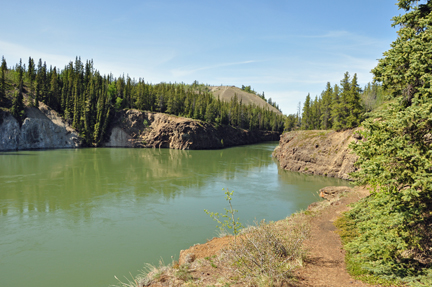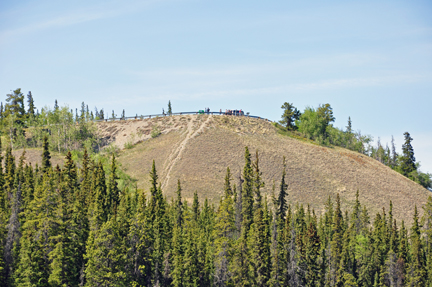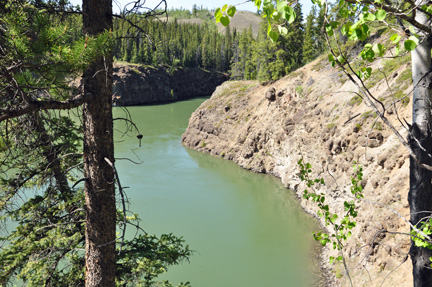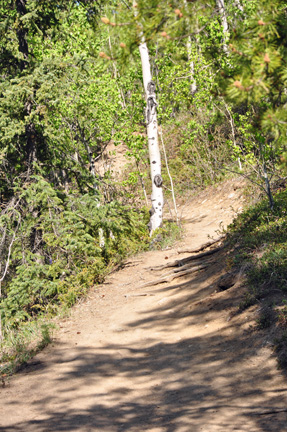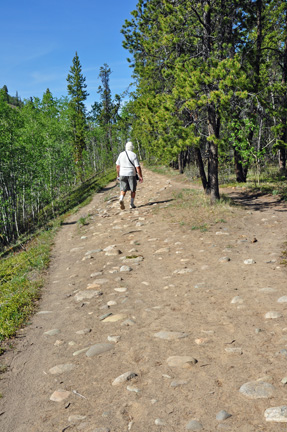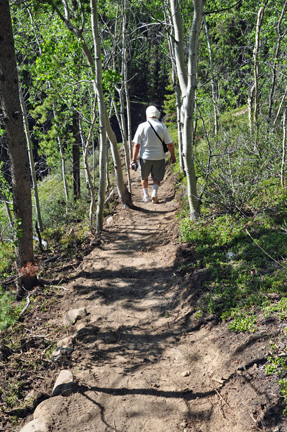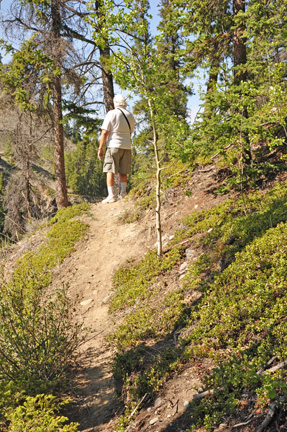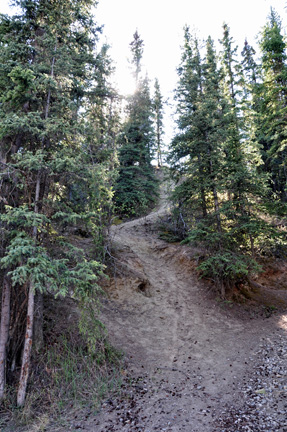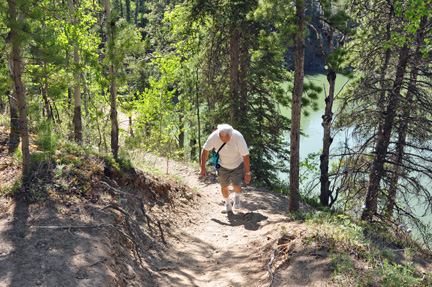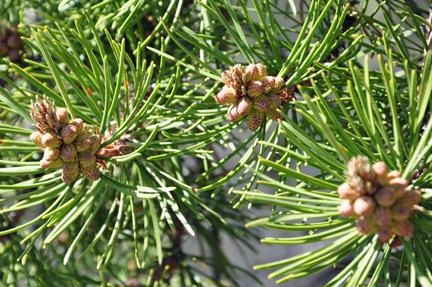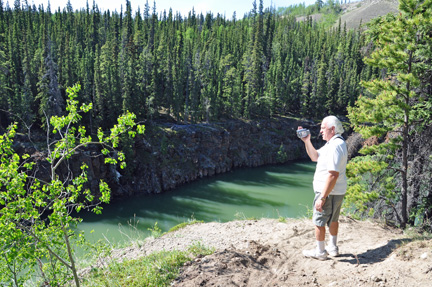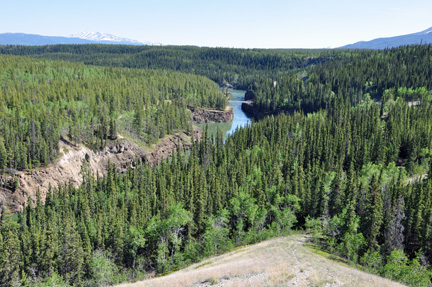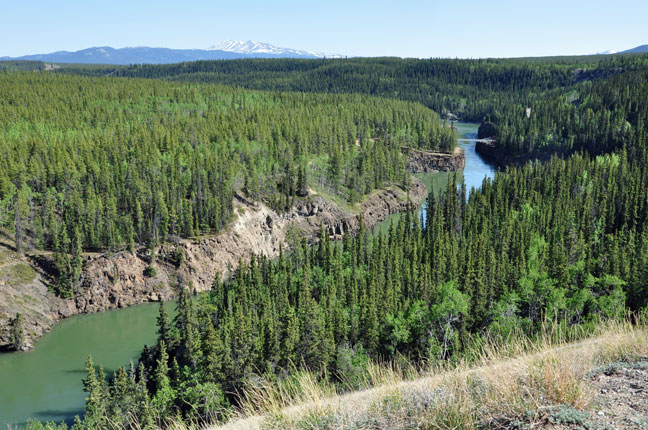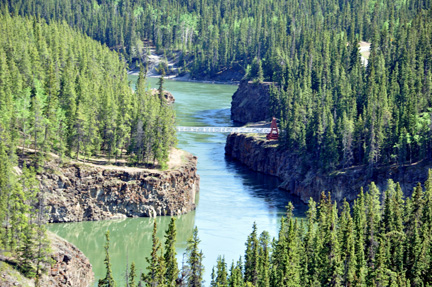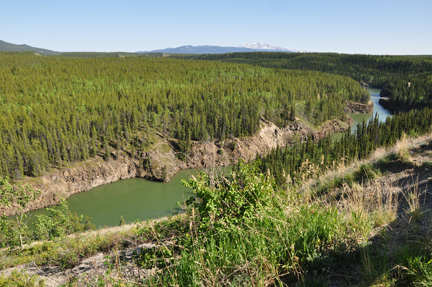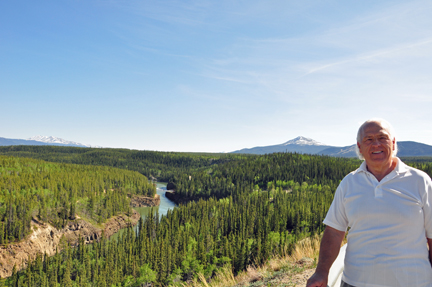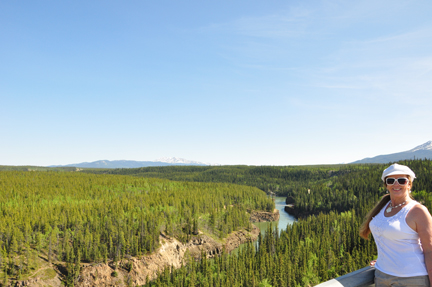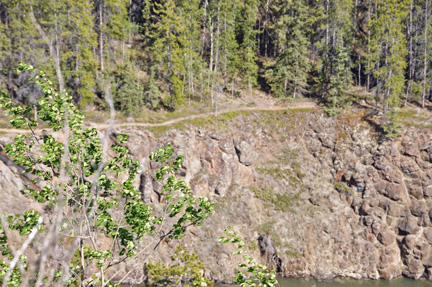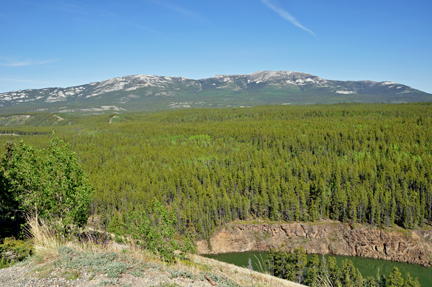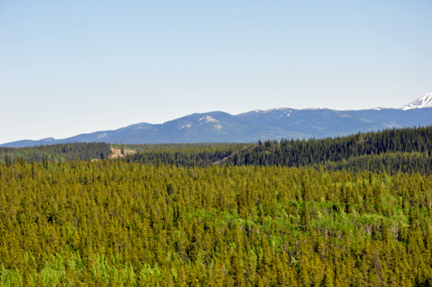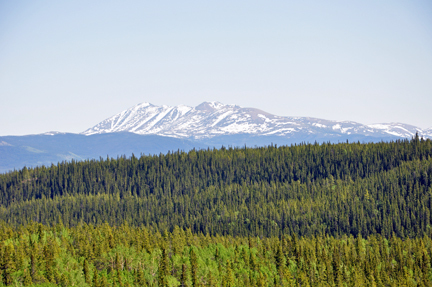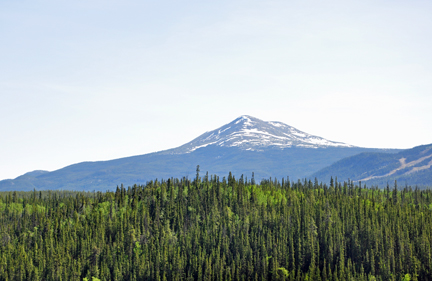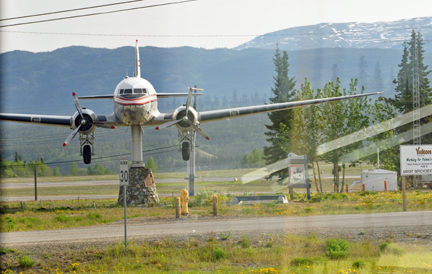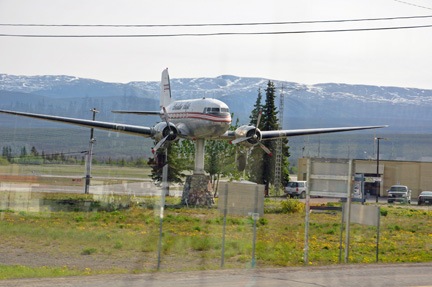|
|
2000 Arctic Winter Games
Torch Monument |
People walking on the iced snow
on the river |
|
|
Below: The S.S. Klondike - Lee and Karen Duquette returned here in 2016
and went on board the ship. To see those photos, use
this link, but if you do, please be sure to return to this page, to
continue with the 2009 trip. |
| One of the largest sternwheelers to ply the
Yukon River has been restored and opened to the public as a National Historic
Site by Parks Canada. Originally launched in 1937, the pride of Whitehorse
now sits along the Yukon River at the southern entrance to the city. 3/4
of the Yukon's population live in Whitehorse. Guided tours available. The
S.S. Klondike was built in 1929 by the British navigation Company (BYNC).
It was the largest on the Yukon with a cargo capacity 50% greater than previous
boats and could carry over 300 tons. She ran aground in 1936 at the confluence
of the Teslin and Yukon rivers. Salvaged parts were used to construct a
new shop - the second SS Klondike (launched in 1937) and was almost identical
to the first. |
|
|
MILES CANYON |
| Lee and Karen Duquette hiked in Miles Canyon
and crossed the Robert Lowe Suspension Bridge. The canyon's wild waters,
now tamed by a dam, presented a formidable challenge to the stampeders trying
to reach the Klondike gold fields in 1897 and 1998. lives were lost and
gear scattered when their often crudely-built boats broke up and sank. |
|
|
|
|
| MILES CANYON: Rocks that make
up this canyon are among the youngest in southern Yukon. They formed as
several overlying flows of basalt lava accumulated in the ancient Yukon
River valley about 8.5 million years ago. Many miners on their way to the
Klondike lost their supplies, or life, passing through this canyon, whose
prowess has since been tamed by the building of the hydro dam at White Horse
Rapids. |
|
|
|
|
|
|
Below: Karen Duquette on
The Robert Lowe Suspension Bridge |
|
|
|
|
Below: A BIG rock as seen
from the bridge |
|
|
|
Below: The trail to the
rock |
|
|
Below: Looking down from
the trail |
|
|
Below: Another trail |
|
|
|
Below: The bridge as seen
from the rock |
|
|
|
|
|
|
|
|
|
|
Below: KAYAKERS |
|
|
|
|
Below: MOB peeking through
the trees |
|
|
Below: The other side of
the bridge - and the observation area |
|
|
|
Below: Lee Duquette on
the Hiking trail |
|
|
|
|
|
|
|
|
Below: View from the observation
area |
|
|
|
|
|
|
Below:
The trail across the river that Lee and Karen Duquette walked on earlier
- as viewed from the observation area. |
|
| Below: Grey Mountain: The
grey rocks are lime stones that formed in ancient tropical seas containing
coral reefs. The tropical seas existed approximately 220 million years ago
during Triassic time. They indicate that rocks underlying this part of the
Yukon originated in a much warmer climate and have since been displaced
northward. These rocks have been completely deformed and folded subsequent
to their deposition millions of years ago. They now have little resemblance
to their origin as a coral reef. |
|
| Below: Mount Lorne - Rocks
underlying this mountain are composed of volcanic strata. These strata were
deposited on land during explosive eruptions throughout the Cretaceous period,
about 100 million years ago. |
|
Below: Golden Horn |
|
| Below: Copper Belt - Approximately
112 million years ago, hot magma, which originated deep in the earth's crust,
intruded into existing lime stones. Where the magma came into contact with
the limestone, "skarns" were formed, creating rich copper deposits.
These deposits encouraged prospectors on their way to the Klondike in 1897.
The mining opportunities in the Whitehorse area contributed significantly
to the economy of the town until the mines closed in 1982. |
|
Below: This DC-3
weather vane at the airport is a Whitehorse landmark. It actually
spins in the wind. Karen Duquette snapped a couple of photos of the weaver
vane as Lee Duquette drove their big RV past it. They were unable to stop. |
|
|
| Lee and Karen Duquette went to a performance
of "Frantic Follies" a vaudeville revue and gold
rush variety entertainment. It was much better than expected. Everyone in
the audience laughed through the whole performance. There was some audience
participation. They highly recommend this experience. Photos were not allowed
to be taken. |
